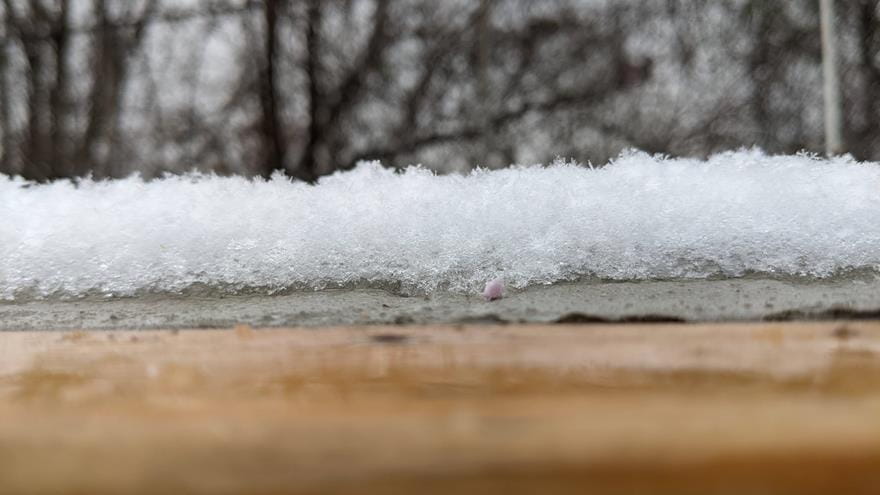Students pour themselves into Concrete Canoe competition

- Drexel's Self-Heating Concrete Is One Step Closer to Clearing Sidewalks Without Shoveling or Salting
- Pinging Pipes Could Help to Identify Lead Water Lines Without Excavation
- MXene-coated Devices Can Guide Microwaves in Space and Lighten Payloads
- Drexel Researchers Propose AI-Guided System for Robotic Inspection of Buildings, Roads and Bridges

Drexel engineering students won’t be without a paddle, but they will design, create and eventually race in a canoe made of concrete in the American Society of Civil Engineers’ (ASCE) annual Concrete Canoe Competition this spring.
It’s no light task. Drexel’s concrete canoe team has to build a workbench, design a final concrete mix, develop a canoe-shaped mold, create the canoe, practice racing it, write a technical report about the whole months-long process and make a five-minute oral presentation for the judges—all voluntarily, without receiving any class credit.
“There is nothing like this anywhere but with this group at Drexel,” said Chris Magruder, a junior civil engineering major and the team’s project manager. “Not only do we have a great time building friendships, but we get to apply what we learn in class and so much more while also having a somewhat athletic side to this competition.”
During the regional and national events, a panel of ASCE-recognized civil engineers will judge the team in four categories: display, technical paper, oral presentation and races.
A large part of the display category is the theme that the team incorporates into the canoe, the canoe stand, a cross-section display and a table display while presenting its final project.
“There are no real requirements for picking the canoe theme except for the fact that it has to be integrated into all aspects of the competition,” Magruder said.
The team likes to have fun with the themes. This year’s project will revolve around “amusement parks,” and previous themes include “concrete jungle,” “urban legend,” “year of the dragon,” the Titanic, Broad Street Bullies and the Phillie Phanatic.
Once the theme is picked, the students split into sections to design the shape of the canoe, create the best composition of the concrete and incorporate theme design. The individual groups’ work is combined on “Pour Day,” which is when the actual canoe is created.
“All of our hard work comes together,” Magruder said. After Pour Day, the canoe is dyed and decorated along with the table display.
Typically, previous canoes weighed between 200 and 250 pounds, but the team aims to create a 150-pound canoe this year. To do this, they’re creating a special concrete made of cement and aggregate, which adds strength to the concrete and determines its weight.
“Cement is going to be the same anywhere you get it, but we use lightweight aggregates such as foam beads, expanded shale, expanded pumice, and expanded glass spheres,” Magruder explained.
So how exactly does a 200-pound concrete canoe float? The answer’s been around since ancient times, stemming from the Archimedes Principle created by the eponymous philosopher. According to the principle, the canoe will sink until the downward force of the canoe weight is equal to the upward force of the water, or its buoyancy.
“It all has to do with the shape [of the canoe] that you use because, depending on the shape, a different amount of water will be displaced,” Magruder said.
He explained that the greater the amount of surface area that the canoe touches in the water, the more area there is for the water to produce an upward force. Therefore, the design of the canoe is equally important to the canoe’s buoyancy as its concrete mix.
While working on the canoe, the team comes together twice a week to work in its lab and also holds paddling practices during the weekend to prepare for the races. However, the team does not prep the canoe for the competition’s swamp test, in which the canoe must rise to the surface after being filled with water and completely submerged.
“There is some risk in doing this, but we always have a safety factor designed into our boat,” Magruder said.
Only the canoes that pass are then eligible to compete against other universities in five races. Two people command the canoe for the male and female “sprints” of 200 yards and “endurance race” of 800 yards, as well as the final race: a co-ed “sprint” of 400 yards with two males and two females in the boat. The stakes are high: one non-podium finish means the team is out of the running.
“Last year, we were barely edged out of first place by our rivals University of Pittsburgh at Johnstown due to some minor point deductions on our behalf,” Magruder said. “You could think of last year’s regional competition as a boxing match that went through all rounds and the judges were indecisive, but one gave them a slightly better score in one section.”
Though Drexel has participated in the ASCE Concrete Canoe Competition every year since its inception in 1988, this marks the first year the team has turned to Kickstarter, the increasingly powerful and popular crowd fundraising site, to raise money for cement and aggregate materials, tools and equipment, among other products.
Since the Kickstarter campaign began Sept. 19, the group has already raised $375 of its $1,500. The campaign will last until Nov. 18.
Those interested in giving financial support to the Drexel University Concrete Canoe team can access the Kickstarter campaign here. Anyone interested in more information about the team can contact Chris Magruder at cam425@drexel.edu.
In This Article
Drexel News is produced by
University Marketing and Communications.
